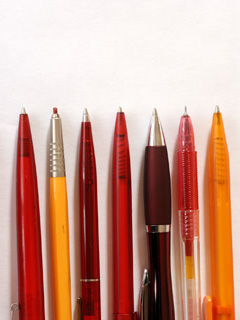Last May, 500 exhibitors and 24,000 visitors descended upon Philadelphia for Lightfair, the annual international trade show for the $30 billion lighting industry. The hot topic? Which new energy-efficient lighting technology will keep our homes bright once 2007’s Energy Independence and Security Act (EISA) takes effect in 2012. It’s a race to win the hearts and minds of consumers who are disillusioned by the shortcomings of compact fluorescent (CFL) bulbs, which were supposed to dethrone incandescent bulbs, but instead turned some consumers off with their light quality, lack of dimmability and mercury concerns.
Increasingly, light emitting diode (LED) bulbs look like they’re winning the race, even if they haven’t reached the finish line yet. They’re super energy-efficient, and they last a long time. LED bulbs use 20-25 percent of the energy of a comparable brightness incandescent bulb, and they last 25 times longer. (CFLs only last 10 times longer.) LEDs are dimmable, and the light color is controllable, eliminating the bluish-white glow many people find unpleasant with CFLs. Plus, LEDs don’t have that pesky problem of possible mercury exposure if you break one of them.
Sounds great, right? It is, but LED technology is still maturing, and there currently isn’t an LED bulb on the market that can replace the 100-watt incandescents that will be banned from sale starting in 2012. (Further provisions in the EISA eliminate 75-watt bulbs in 2013; 60- and 40-watt bulbs disappear a year later.) In fact, the only soft white LED bulb that people can actually buy right now is a 60-watt equivalent from Philips that sells for $45. Switch, a plucky start-up from California, plans to start taking pre-orders for their $20 “warm white” 60-watt equivalent and 75-watt equivalent models in September, and you’ll receive your bulb in November. They plan to release a warm 100-watt-equivalent bulb sometime next year.
But $20—or worse, $45—seems like a lot to spend on a light bulb. However, when you consider it over the 20-year life of the bulb, the Switch bulb will have saved you money by the fourth year when compared with incandescent bulbs. Not only that, but Haitz’s Law, developed by Roland Haitz, a Hewlett-Packard semi-conductor researcher, explains that the amount of light produced by LEDs would increase by a factor of 20 per decade, while cost would drop by a factor of 10. So far, the law has proven quite accurate, meaning that today’s $20 bulbs could be significantly cheaper in only a few years. Additionally, once traditional incandescents are off the market altogether, consumers are going to have to switch to something, and with the growing distaste for CFLs, it’s starting to look like LEDs will eventually win the day.
— Samantha Wittchen
Samantha Wittchen is partner and co-founder of iSpring (ispringassociates.com), a sustainability consulting firm serving companies and organizations in the Delaware and Lehigh valleys.



